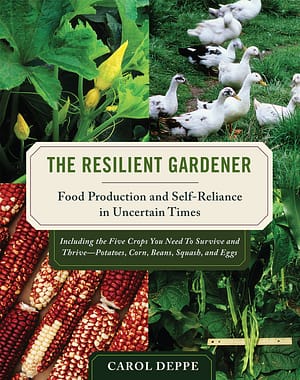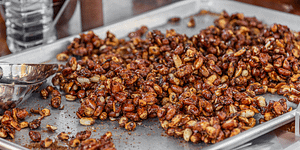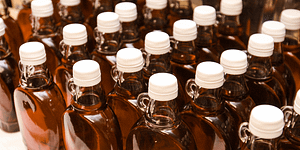Drying Prune Plums (Plus Figs, Apricots, Peaches and Nectarines)

Learn the ropes on drying prune plums and other fruits! Whether you’re a pro at preserving or you’ve never tried it out before, anyone can make these simple and delicious snacks.
The following excerpt is from The Resilient Gardener by Carol Deppe. It has been adapted for the web.
Prune Plums: Perfect for Preservation

I dry prune plums by picking or shaking them off the trees, then collecting them in monolayers in flat cardboard trays (such as are discarded by grocery stores after they remove the six-packs of soda).
The plums will shake off the tree when they are ready to ripen, but will still be hard enough at the shake-off stage to be quite resistant to bruising. I’ve harvested immense amounts by shaking the trees every two or three days and collecting until the harvest is over. I let the plums ripen to perfection indoors, examining them daily. It’s easiest to tell prime ripeness by squeezing each plum very gently.
The Process of Drying Prune Plums
To process for drying, I rinse the plums (if necessary), cut them in half, and flip the seed out with my finger. Then I pop the backs as I place each half in the dehydrator (cut side up). “Pop the backs” simply means pressing against the skin side of each half to turn the half inside out. No pretreatments are necessary. The optimum temperature for drying is 135°F.The drying takes place from the cut surface, not through the skin. So it isn’t necessary to turn the plum halves over, and they don’t stick to the drying surface.
The same process is used to dry halved figs and freestone varieties of apricots, peaches, and nectarines. All other fruits require additional work to remove cores or seeds and/or to slice for drying. Sliced fruit takes much more space in the dehydrator than fruit that can be dried in halves. And sliced fruit must be turned over piece by piece part way through the drying; plus it sticks to the drying surface. So if you love dried fruit but are as resistant to processing labor as I am, look first to prune plums, figs, and freestone varieties of apricots, peaches, and nectarines.
Recommended Reads
Recent Articles
What’s so great about oyster mushrooms? First, you can add them to the list of foods that can be grown indoors! They are tasty, easy to grow, multiply fast, and they love a variety of substrates, making oyster mushrooms the premium choice. The following is an excerpt from Fresh Food from Small Spaces by R. J.…
Read MoreCraving something sweet? These delicious maple roasted nuts are the perfect treat to help you push through those end-of-winter blues. The following is an excerpt from Full Moon Feast by Jessica Prentice. It has been adapted for the web. The Magic of Maple: A Rich History Following the Hunger Moon, just before the first thaw…
Read MoreDoes the cold weather have you dreaming about fresh greens and colorful salad? Grow and harvest sprouts indoors to make those dreams a reality! Follow this quick start guide to year-round greens for fresh salad greens in just a couple of weeks! The following is an excerpt from Year-Round Indoor Salad Gardening by Peter Burke. It…
Read MoreMove aside, maple! We have two new syrups to add to the table. Read on for insights on tapping, selling, and eating syrup from walnut & birch trees.
Read More






